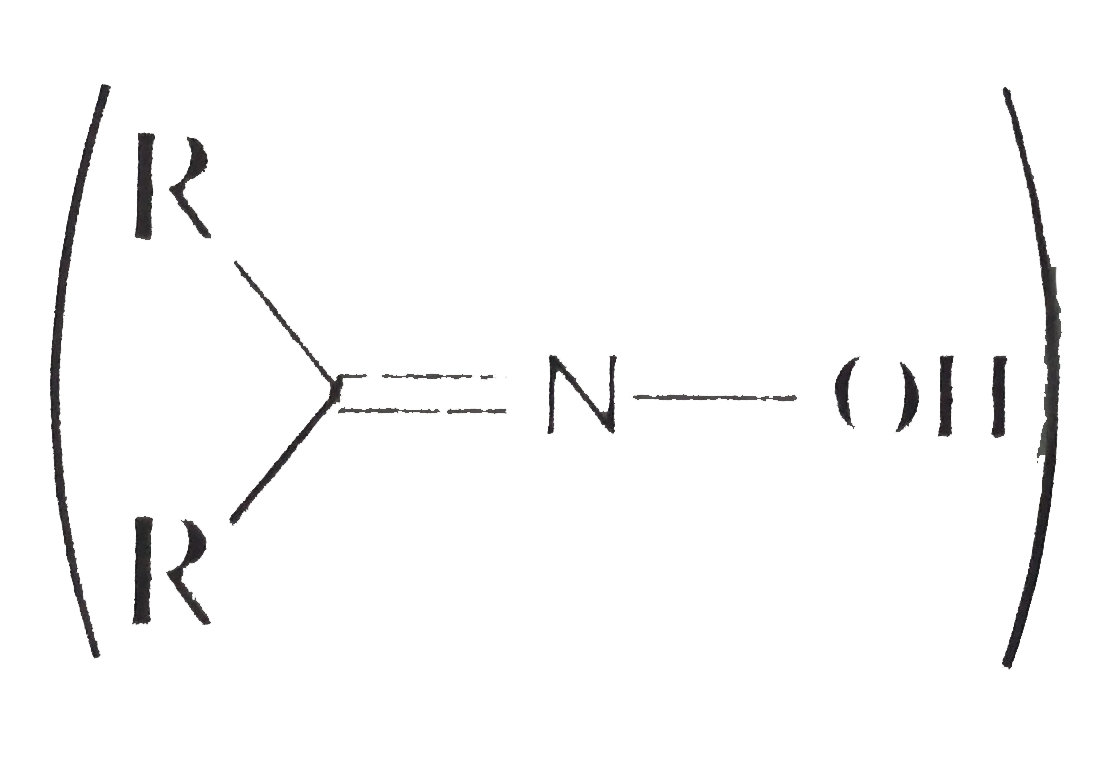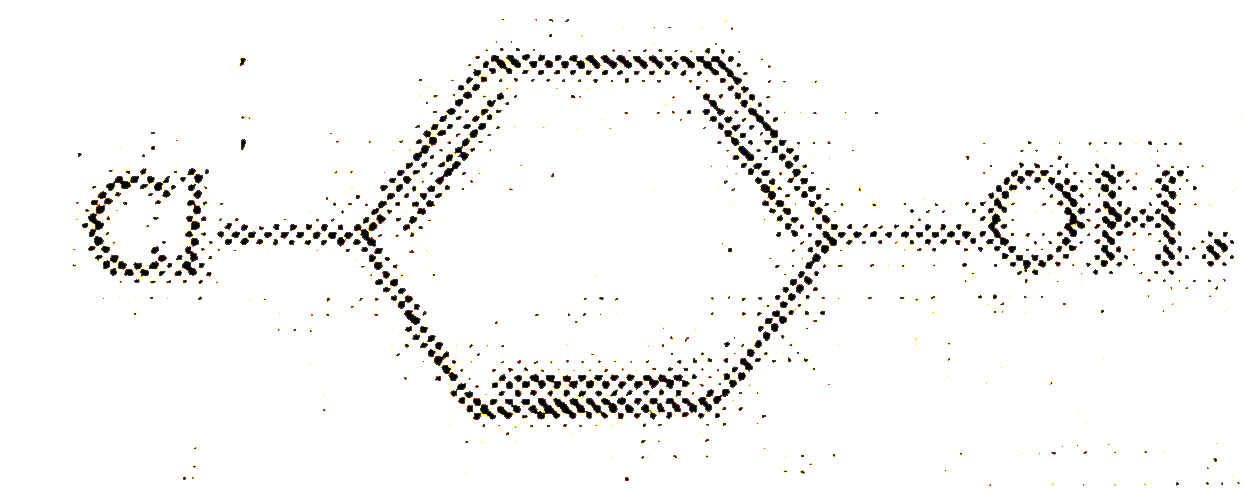Assertion: Oximes are less acidic than hydroxyl amine.
Reason: Oximes of aldehydes and ketones show geometrical isomerism.
If both assertion and reason are true and the reason is the correct explanation of the assertion
If both assertion and reason are true but reason is not the correct explanation of the assertion
If assertion is true but reason is false
If assertion is false but reason is true
To solve the question regarding the assertion and reason about oximes and hydroxylamine, let's break it down step by step.
Step 1: Understand the Assertion
Assertion: Oximes are less acidic than hydroxylamine.
- Explanation:
- Hydroxylamine (NH2OH) has an acidic hydrogen atom on the hydroxyl (-OH) group. When this hydrogen is removed, it forms a stable conjugate base due to resonance stabilization.
- Oximes (R1R2C=NOH) have a hydroxyl group attached to a carbon-nitrogen double bond. The acidic hydrogen in oximes is on the hydroxyl group as well, but the conjugate base formed after deprotonation is less stable compared to that of hydroxylamine. This is due to the lack of resonance stabilization in the oxime's conjugate base.
Conclusion for Step 1: The assertion is true; oximes are indeed less acidic than hydroxylamine.
Step 2: Understand the Reason
Reason: Oximes of aldehydes and ketones show geometrical isomerism.
- Explanation:
- Geometrical isomerism (cis-trans isomerism) occurs when there are different groups attached to the carbon atoms involved in a double bond.
- In the case of oximes derived from aldehydes and ketones, geometrical isomerism can occur if the carbon atom that is double-bonded to nitrogen (C=N) has different substituents. For example, if the oxime is derived from a ketone where the two groups attached to the carbon are different, geometrical isomers can exist.
- However, if both substituents are the same (as in the case of symmetrical ketones), geometrical isomerism does not occur.
Conclusion for Step 2: The reason is true; oximes can show geometrical isomerism under certain conditions.
Final Conclusion
- The assertion is true, and the reason is also true. However, the reason does not directly support the assertion since the acidity of oximes is not related to their ability to show geometrical isomerism.
Answer:
- The assertion is true, and the reason is true, but the reason does not explain the assertion.
Assertion: Oximes are less acidic than hydroxylamine.
- Hydroxylamine (NH2OH) has an acidic hydrogen atom on the hydroxyl (-OH) group. When this hydrogen is removed, it forms a stable conjugate base due to resonance stabilization.
- Oximes (R1R2C=NOH) have a hydroxyl group attached to a carbon-nitrogen double bond. The acidic hydrogen in oximes is on the hydroxyl group as well, but the conjugate base formed after deprotonation is less stable compared to that of hydroxylamine. This is due to the lack of resonance stabilization in the oxime's conjugate base.
Reason: Oximes of aldehydes and ketones show geometrical isomerism.
- Geometrical isomerism (cis-trans isomerism) occurs when there are different groups attached to the carbon atoms involved in a double bond.
- In the case of oximes derived from aldehydes and ketones, geometrical isomerism can occur if the carbon atom that is double-bonded to nitrogen (C=N) has different substituents. For example, if the oxime is derived from a ketone where the two groups attached to the carbon are different, geometrical isomers can exist.
- However, if both substituents are the same (as in the case of symmetrical ketones), geometrical isomerism does not occur.
- The assertion is true, and the reason is also true. However, the reason does not directly support the assertion since the acidity of oximes is not related to their ability to show geometrical isomerism.
- The assertion is true, and the reason is true, but the reason does not explain the assertion.
Topper's Solved these Questions
- ALDEHYDES AND KETONES BOOK - ERRORLESS CHAPTER - ALDEHYDES AND KETONES EXERCISE - Critical Thinking Objective Questions
21 Videos
- ALDEHYDES AND KETONES BOOK - ERRORLESS CHAPTER - ALDEHYDES AND KETONES EXERCISE - JEE Section Only one choice correct answer
39 Videos
- ALDEHYDES AND KETONES BOOK - ERRORLESS CHAPTER - ALDEHYDES AND KETONES EXERCISE - Ordinary Thinking (Objective Questions) Preparation
43 Videos
- ALCOHOL, PHENOL AND ETHERBOOK - ERRORLESS CHAPTER - ALCOHOL, PHENOL AND ETHEREXERCISE - JEE SECTION (JEE Advanced 2018) More than one choice correct answer
1 Videos
- ANALYTICAL CHEMISTRYBOOK - ERRORLESS CHAPTER - ANALYTICAL CHEMISTRYEXERCISE - JEE Section (Only One Choice Answer)
36 Videos
Similar Questions
Knowledge Check
Ketones are less reactive than aldehydes because
AC = O group is less polar in ketonesBof electromeric effectCsteric hindrance to the attacking reagentDnone of theseKetones are less reactive than aldehydes because
AThe + I-effect of the alkyl groups increases the electron deficiency of the carbonyl carbonBThe + I-effect of the alkyl groups decreases the electron deficiency of the carbonyl carbonCOf steric hindrance to the attacking nucleophileDBoth (b) and (c) options are correctStatement-I: Ketones are less reactive than aldehydes.
Because
Statement-II: Ketones do not give Schiff's test.AIf both assertion and reason are true and the reason is the correct explanation of the assertionBIf both assertion and reason are true but reason is not the correct explanation of the assertionCIf assertion is true but reason is falseDIf assertion is false but reason is true
Compare th relative acidic strengths of hydroxyl amine and am oxime.
View SolutionOxides
 are more acidic than hydroxylamine (NH2OH).
are more acidic than hydroxylamine (NH2OH).
Conjugate base of oxime is resonance stabilised.
View SolutionAssertion:
 is less acidic than
is less acidic than

Reason: -F exerts better+mesomeric effect than -Cl.
View SolutionAssertion : Geometrical isomerism is also called cis-trans isomerism .
Reason : Tetrahedral complexes show geometrical isomerism .
View SolutionAssertion: Cresols are less acidic than phenol.
Reason: Electron releasing grops do not favour the formation of phenxide ion.
View Solution
